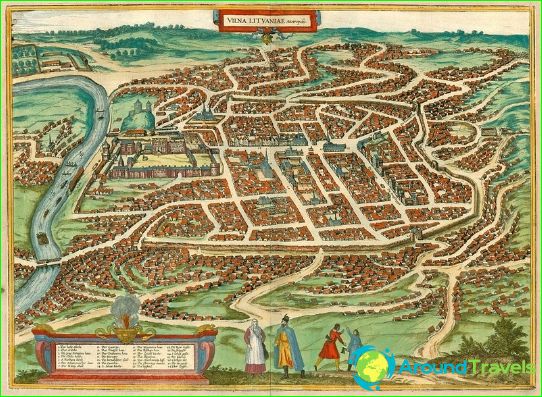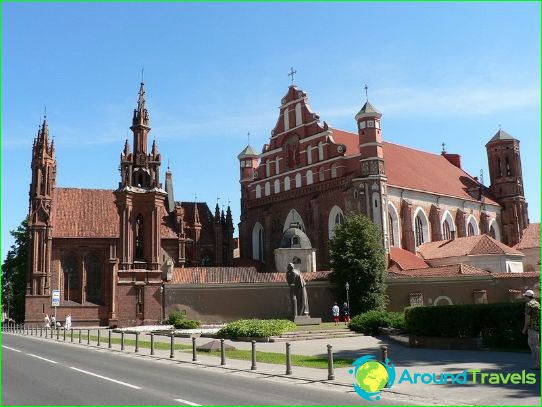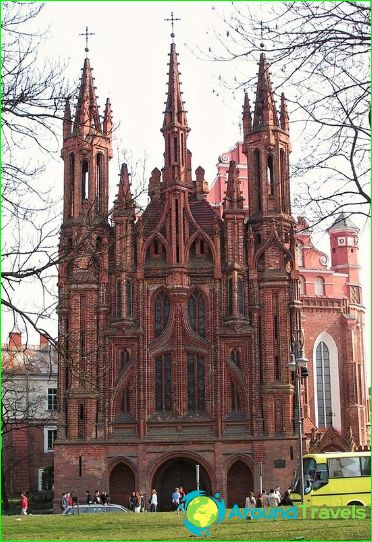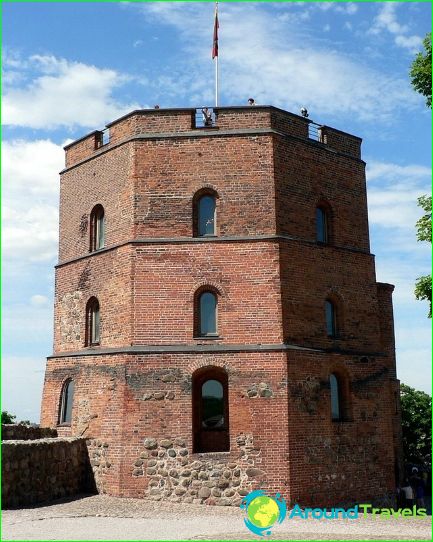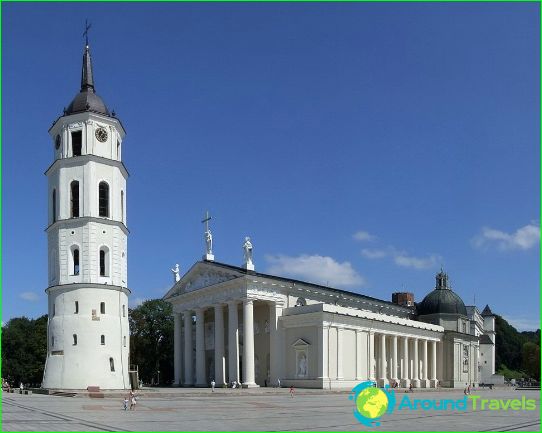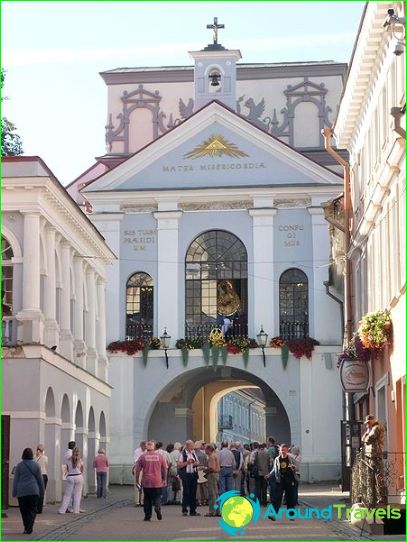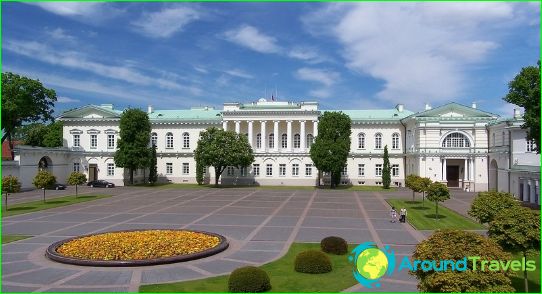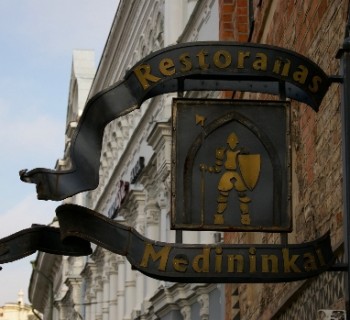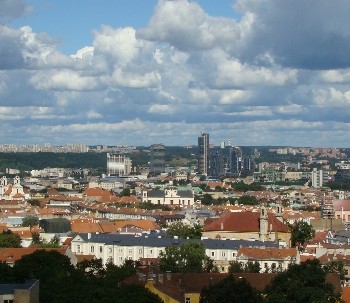History of Vilnius
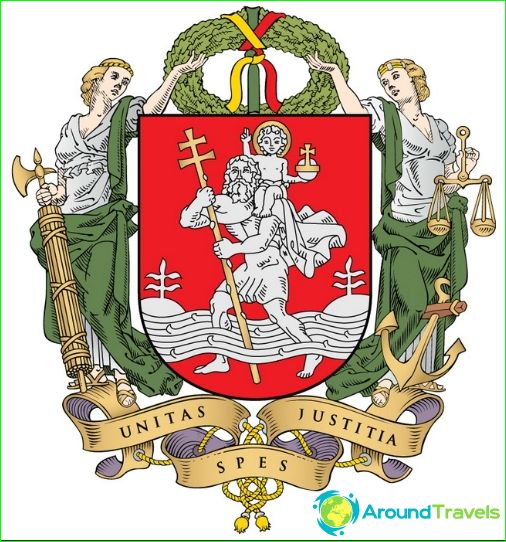
Coat of arms of Vilnius
Vilnius is the capital, as well as the economic and cultural center of Lithuania. This incredibly picturesque and green city is located in the southeastern part of the country at the confluence of the Vilnia River with Viliya (Neris, Neris). Many historians and linguists believe that exactly «Vilnia» and gave the name to the city.
Founding of Vilnius
Settlements on these lands existed in the prehistoric period, but the exact date of the founding of the modern city is not known for certain. The first written mentions of the city are found in the letters of the Grand Duke of Lithuania Gediminas and date back to 1323. Vilnius is already mentioned in documents as «capital city» The Grand Duchy of Lithuania. It is Prince Gediminas who is revered by the Lithuanians as the founder of Vilnius..
In the following decades, Gediminas, thanks to wars, strategic alliances and marriages, significantly expanded the possessions of his principality. Vilnius (or as the city of Vilna was called then) remained the capital and main residence of the prince and flourished. In 1385, the grandson of Gediminas Jagiello, as a result of the signing of the Kreva Union (a dynastic union between the Grand Duchy of Lithuania and the Kingdom of Poland, preceding the creation in 1569 of a unified federal state of the Polish-Lithuanian Commonwealth) became the Polish king. In 1387 Jagiello granted Magdeburg Law to Vilnius.
The heyday of Vilnius
At the beginning of the 16th century, massive defensive walls were built around the city. In 1544, the well-fortified and prosperous Vilnius was chosen by the Polish king and prince of Lithuania Sigismund I as his residence. The active development and formation of Vilnius as an important cultural and scientific center was greatly facilitated by the foundation in the city by Stefan Batory in 1579 of the Academy and University of the Vilnius Society of Jesuits (today the University of Vilnius).
The 17th century brought a series of setbacks to the city. During the Russian-Polish war (1654-1667), Vilnius was occupied by Russian troops and, as a result, plundered and burned, and a significant part of the population was destroyed. During the Northern War, the city suffered from the Swedes. The city was not spared by the outbreak of the bubonic plague in 1710, as well as the subsequent numerous fires..
Loss of independence
By the end of the 18th century, after the last third partition of the Polish-Lithuanian Commonwealth, as a result of which it actually ceased to exist, Vilnius became part of the Russian Empire and became the capital of the Vilna province. During this period, the city walls were almost completely destroyed with the exception of the so-called «Sharp Brahma» - the only city gate with a chapel that has survived to this day. In the chapel, the miraculous image of the Mother of God of Ostrobramskoy is kept today (a rather rare type of icons depicting the Mother of God without a baby in her arms) - one of the main Christian shrines in Lithuania.
In the summer of 1812, during the war between the Russian Empire and Napoleonic France, Vilnius was occupied by Napoleon's troops, but, having suffered a crushing defeat, they were soon forced to leave it. The city's hopes for possible independence from the Russian Empire did not come true, and in 1830 it turned into a liberation movement, the main slogan of which was «restoration of the independence of the Polish-Lithuanian Commonwealth». As a result, the rebellion was suppressed, the Vilnius University was closed, and the inhabitants of the city were subjected to massive repressions. Civil unrest in 1861 and 1863 was also brutally suppressed, which led to the deprivation of the inhabitants of Vilnius of a number of rights and freedoms, as well as a ban on the use of the Polish and Lithuanian languages. Nevertheless, by the end of the 19th century Vilnius became the cultural and political center of the revival of the Lithuanian nation. In 1904, the ban on the Lithuanian press was lifted, and the first newspaper in the Lithuanian language was published in the city. «Vilniaus zinos». In 1905, the Great Vilnius Seimas took place, which approved a memorandum to the Chairman of the Council of Ministers of Russia demanding Lithuanian autonomy and which became, perhaps, one of the most important stages in the formation of the modern Lithuanian nation and the restoration of Lithuanian statehood..
The twentieth century
In 1915-1918, during the First World War, Vilnius was occupied by the German army. On February 16, 1918, the Lithuanian State Independence Act was signed in Vilnius. And although the official publication of the act was prohibited by the German authorities, the text of the resolution was printed and distributed underground. The document was of exceptional importance and formulated the basic principles of the state structure, and also served as a legal basis for the restoration of Lithuania's independence in 1990. After the departure of the German troops, the city was for some time under the control of the Poles, and then it was occupied by the Red Army. In July 1920, an agreement was signed between Lithuania and Soviet Russia, which guaranteed the sovereignty of Lithuania, which included the Vilnius region, headed by Vilnius. A few months later, Poland and Lithuania signed the Suwalki Treaty, according to which the Vilna region was assigned to Lithuania. True, Poland practically immediately violated the treaty by occupying Vilnius, which later became the administrative center of the Vilnius Voivodeship and existed in this capacity until 1939.
In September 1939, Soviet troops occupied Vilnius, and in October it was signed «Mutual Assistance Agreement» and Vilnius officially became part of Lithuania. Nevertheless, already in August 1940, as a result of a series of cunning political manipulations, Lithuania became part of the USSR, and Vilnius became the capital of the Lithuanian SSR. In June 1941, Vilnius was occupied by the Germans and liberated by the troops of the Soviet army only in July 1944..
Lithuania managed to finally restore its independence only in 1991. Vilnius again became the capital of the independent state of Lithuania..
Pictures of Vilnius
-
Coat of arms of Vilnius
-
Vilnius in 1599
-
Bernardine monastery and St. Anne's church
-
St. Anne's Church
-
Gediminas tower
-
Vilnius Cathedral
-
Ostrobramsk gate
-
Presidential palace
